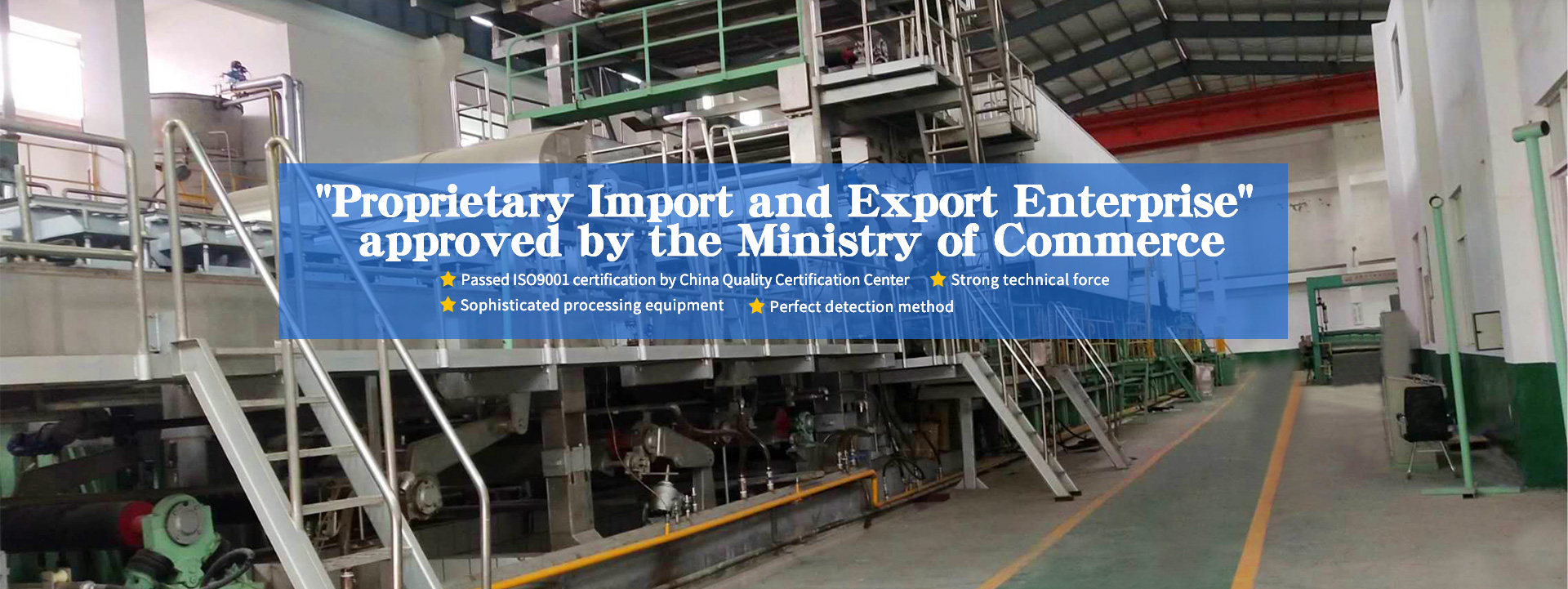Common Sense of Paper Industry———Term Explanation
1. Pulp: prepared fibrous material (generally derived from natural plants) for further processing.
2. Pulp classification: According to the raw material source of the pulp, it can be divided into wood pulp, non-wood pulp and waste paper pulp; according to the production process, pulp can be divided into chemical pulp, mechanical pulp and chemical mechanical pulp.
3. Wood pulp: refers to the pulp made with softwood or hardwood as raw materials, chemical or mechanical or both. Including chemical wood pulp, mechanical wood pulp and chemical mechanical wood pulp.
4. Non-wood pulp: refers to gramineous stalk fibers (straw, wheat straw, reed, bagasse, bamboo, etc.), bast fibers (linen and cotton dry bark, mulberry, gouache and other cortical fibers) , Leaf fibers (Dragon's beard, sisal, etc.) and seed wool fibers (cotton fibers) as raw materials, pulp made by chemical or mechanical methods or both. Including chemical non-wood pulp, chemical mechanical non-wood pulp, etc.
5. Waste paper pulp: refers to pulp made from recycled waste paper and waste paperboard.
6. Chemical pulp: pulp made by chemically treating plant fiber raw materials to remove a significant portion of non-cellulose components from plant fiber raw materials, without the need for subsequent mechanical treatment to achieve fiber separation.
7. Mechanical pulp: Pulp made from different plant fiber raw materials (mainly wood raw materials) completely mechanically for the manufacture of paper and cardboard. Such as pressure grinding stone ground wood pulp (PGW), wood chip thermomechanical pulp (TMP), blasting pulp.
8. Chemical mechanical pulp: The pulp used for paper and cardboard made from different plant fiber raw materials (mainly wood raw materials) using chemical pretreatment combined with mechanical methods. Such as chemical mechanical pulp (CMP), chemically pretreated wood chip groundwood pulp (CTMP), bleached chemical thermomechanical pulp (BCTMP), alkaline peroxide mechanical pulp (APMP).
9. Commodity pulp: refers to the pulp that is distributed and sold in the commodity market (generally processed into pulp board), excluding the pulp used by the enterprise.
10. Elemental chlorine-free bleaching (ECF bleaching for short) refers to a bleaching technology that uses chlorine dioxide instead of elemental chlorine as a bleaching agent.
11. Totally chlorine-free bleaching (TCF bleaching for short) refers to a bleaching technology that does not use any chlorine-containing compounds in the entire bleaching process. The main bleaching agents are hydrogen peroxide and ozone.
12. Domestic waste paper recycling rate: refers to the percentage of domestic waste paper recycling used in the pulp and paper industry to the consumption of paper and cardboard.
13. Domestic waste paper utilization rate: refers to the percentage of domestic waste paper recycling and paper and cardboard production used in the pulp and paper industry.
14. Classification of paper and cardboard: Generally, paper is divided into cultural paper (newsprint, printing and writing paper, copy paper, office paper, etc.) according to its purpose; packaging paper (commercial packaging paper, paper bag paper, food and candy packaging) Paper, etc.); household paper (toilet paper, sanitary napkins, facial tissues, napkins, diaper paper, etc.) and special papers (finance, building materials, electrical and electricity, microelectronics, national defense, communications, food, medical, etc.) paper). Divide cardboard into packaging cardboard (box cardboard, corrugated base paper, white cardboard, etc.); construction cardboard (gypsum cardboard, soundproof cardboard, fireproof cardboard, waterproof cardboard, etc.); printing cardboard (font cardboard, cover cardboard, envelope cardboard, etc.) , Ticket cardboard, etc.) and special cardboard (jacquard cardboard, steel paper cardboard, spinning cardboard, shoe-making cardboard, filter cardboard, insulating cardboard, high-temperature thermal insulation cardboard, etc.).
15. Quantitative: The mass per square meter of paper or cardboard is expressed in g/m2.
Generally, paper with a basis weight of less than 225g/m2 is considered to be paper, and a basis weight of 225g/m2 or more is considered to be paperboard. With the development of paper and paperboard in the direction of low basis weight, the distinction between paper and paperboard is mainly defined according to their characteristics and uses. For example, blotting paper and drawing paper with a basis weight greater than 225g/m2 are usually called paper. Low-weight paper generally specifies a quantity of less than 40g/m2.
 Chinese
Chinese English
English








